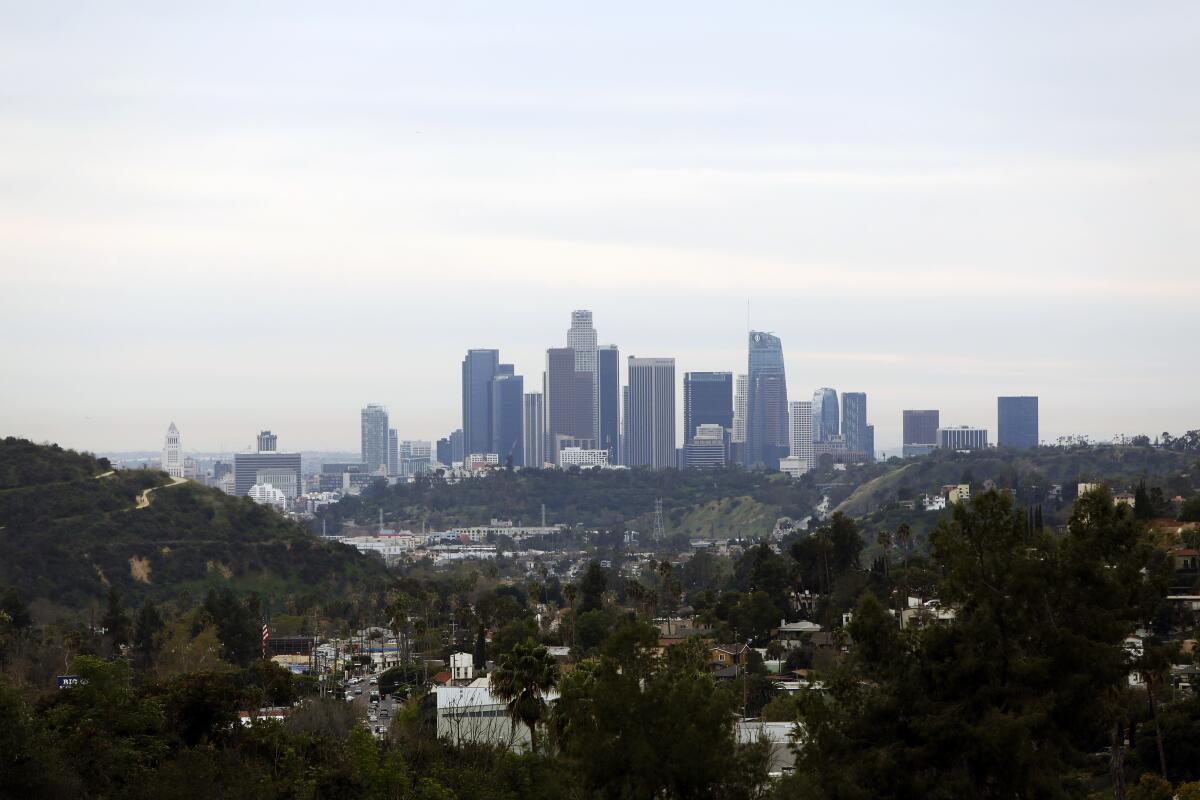Atmospheric river to unleash heavy rain in Southern California starting tonight

A moisture-rich atmospheric river approaching the coast of Southern California is expected to unleash the first significant rainfall of the year beginning late Monday.
The stormâ fed by a plume of subtropical water vapor at the lower and middle levels of the atmosphere â could bring 1 to 3 inches of rain to the area through at least Wednesday. Some southern areas, including the foothills of the San Gabriel Mountains, could see up to 4 inches of rain, said Richard Thompson, a meteorologist with the National Weather Service in Oxnard.
The heaviest rain is expected throughout Tuesday, upping the chances for both an ugly morning and evening commute. Forecasters also are keeping an eye on conditions that could produce thunderstorms across the region. If a thunderstorm does form, it will be able to produce rainfall rates in excess of an inch per hour. Officials say these rates would likely cause flooding near recent burn areas.
The rain is expected to lessen by Wednesday, but scattered showers could linger through Thursday and Friday, forecasters said.
While the northern section of the state saw a few scattered showers from an earlier storm over the weekend that largely missed Southern California, that region wonât be seeing much moisture from the atmospheric river, Thompson said.
âSouthern California is going to be the big winner from this storm,â he said.
The rain appears to be just in time to help the region rebound from disappointing precipitation totals after a parched start to 2020. A high-pressure ridge that lingered over the eastern Pacific Ocean for much of January and February rerouted winter storms that typically soak California and the Pacific Northwest during what are usually the stateâs wettest months.
A total of 0.04 inches of rain fell in downtown Los Angeles last month, placing it in a tie with February 1899 for the 10th-driest February on record. Downtown L.A. also had its fourth-driest combined January and February on record after just 0.36 inches fell during the first two months of 2020. The driest combined January and February occurred in 1912, when a scant 0.07 inches of rain fell in downtown.
Forecasters and water managers keeping a close eye on precipitation are hopeful that a wet month, a phenomenon known by weather experts as a âmiracle March,â may help bolster lackluster winter rain totals and help keep the state out of drought conditions.
A dry few months have already taken their toll on much of the state. Nearly 70% of California, including much of Los Angeles County, is considered to be in abnormally dry conditions. Just over 34% of the state, including portions of the Bay Area and much of the San Joaquin Valley, is considered to be in moderate drought conditions, according to maps released last week by the U.S. Drought Monitor.
More to Read
Sign up for Essential California
The most important California stories and recommendations in your inbox every morning.
You may occasionally receive promotional content from the Los Angeles Times.











